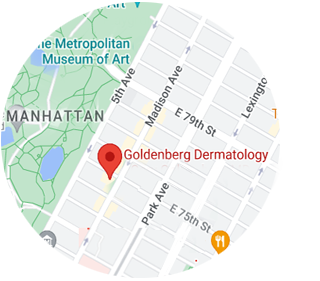5 Myths About Skin Cancer
There is a lot of misinformation regarding skin cancer on the internet. This article, by renowned NYC dermatologist and dermatopathologist Dr. Gary Goldenberg, will help you separate fact from fiction, and will provide professional insight into what skin cancer is and is not.

Skin cancer, the uncontrolled growth of abnormal skin cells, is the most common form of cancer, accounting for roughly half of all cancers in the U.S. Unfortunately, if left untreated, skin cancer – particularly melanoma – may be fatal. Therefore, identifying skin cancer and treating it early, before it has spread, offers the best chance for a complete cure.
Skin Cancer Myth #2: Tanning beds are a safer way to tan than tanning outdoors.
This is false. Tanning beds do NOT offer a safe alternative to natural sunlight. Whether derived from the sun or from artificial sources such as sun lamps and tanning beds, ultraviolet (UV) radiation has been indisputably linked to skin cancers (including basal cell carcinoma, squamous cell carcinoma, and melanoma) and to other sorts of skin damage, particularly premature skin aging.
Skin Cancer Myth #3: A base tan will prevent you from getting sunburned.
This is simply not true. Any degree of suntan or skin darkening is a sign of skin damage, and acquiring a tan will not prevent you from further burning. The only way to protect one’s self from the damaging effects of the sun’s harmful rays is to utilize proper sun protection; that means using a sunscreen with an SPF of at least 15 and avoiding the sun during peak hours (10 A.M – 4 P.M.) It is also advisable to cover up with lightweight, tightly woven clothing, a wide-brimmed hat, and UV blocking sunglasses.
Skin Cancer Myth #4: You cannot get sun damage on an overcast day.
Like many people, you may believe there is no risk of sun damage on a cloudy or overcast day – but this isn’t the case. Just because you do not necessarily feel the sun’s heat, or see its bright rays, does not mean you are at any less risk of exposure to its harmful effects. In fact, most sunburns occur when least expected. Even on cloudy, foggy or wintry days, 87% of the sun’s UV rays are still penetrating.
Skin Cancer Myth #5: People with darker complexions do not need to worry about sun damage.
There is a common misconception that those with darker skin complexions are immune to the perils of skin damage. This is false. Everyone, regardless of skin tone, is at risk for developing skin cancer during their lifetime. In fact, those with darker skin tones are even more susceptible to certain types of hereditary skin cancers, such as acral lentiginous melanoma (ALM) than those with fairer complexions.
If you would like to learn more about your personal skin cancer risk as well as prevention and treatment options, please contact the office of Dr. Goldenberg for a professional consultation.












Leave a Reply
Want to join the discussion?Feel free to contribute!